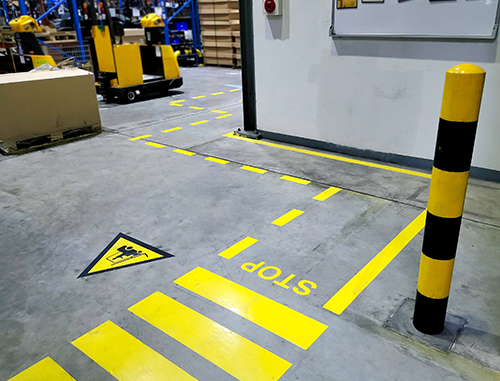
Safety in a warehouse isn’t optional—it’s a fundamental requirement. With heavy machinery, high shelving, and constant activity, warehouses present countless risks to workers and daily operations. Failing to address safety can lead to injuries, downtime, and costly damages. Read on the discover the four key safety measures every warehouse needs.
Comprehensive and Regular Training
Comprehensive and regular training is the backbone of warehouse safety. It equips employees with the knowledge to operate complex machinery, identify workplace hazards, and respond effectively to emergencies. Tailored training programs for specific roles ensure that workers are well-prepared to handle their unique responsibilities, while routine refresher courses help reinforce critical safety practices. By prioritizing regular training, warehouses can significantly reduce the risk of accidents, creating a safer environment for everyone.
Clear Signage and Labels
Clear signage and labels are critical for maintaining warehouse safety and organization. Signage prevents confusion by marking hazardous areas, restricted zones, and emergency exits, ensuring employees are aware of potential dangers. Labels streamline operations by clearly identifying inventory, storage locations, and equipment, reducing errors and misplaced items. Together, these visual cues keep employees informed, minimizing the likelihood of accidents and injuries.
Adequate Lighting and Ventilation
Adequate lighting and ventilation are vital for ensuring safety and comfort in a warehouse. Proper lighting enhances visibility, reducing the risk of accidents such as trips, slips, or collisions. Ventilation plays a crucial role in maintaining good air quality, which helps prevent respiratory issues and other health concerns among employees. Together, these measures support the well-being of workers, enabling them to perform their tasks efficiently without unnecessary strain or hazards.
Detailed Structural Inspections
Detailed structural inspections are essential for maintaining a safe warehouse environment. They help identify potential hazards such as damaged flooring or unstable infrastructure before these issues escalate into safety risks. Regular rack inspections not only prevent accidents but also ensure compliance with safety regulations, reducing the chance of costly violations. By addressing structural problems promptly, warehouses can safeguard both employees and valuable inventory from harm.
Key safety measures like training, clear signage, proper lighting, and regular inspections are essential to maintaining a secure and efficient warehouse environment. By implementing these strategies, warehouses not only protect their employees but also improve workflow and reduce preventable risks. Take the first step toward a safer workspace today by evaluating your warehouse and prioritizing these critical safety measures.


Be the first to comment